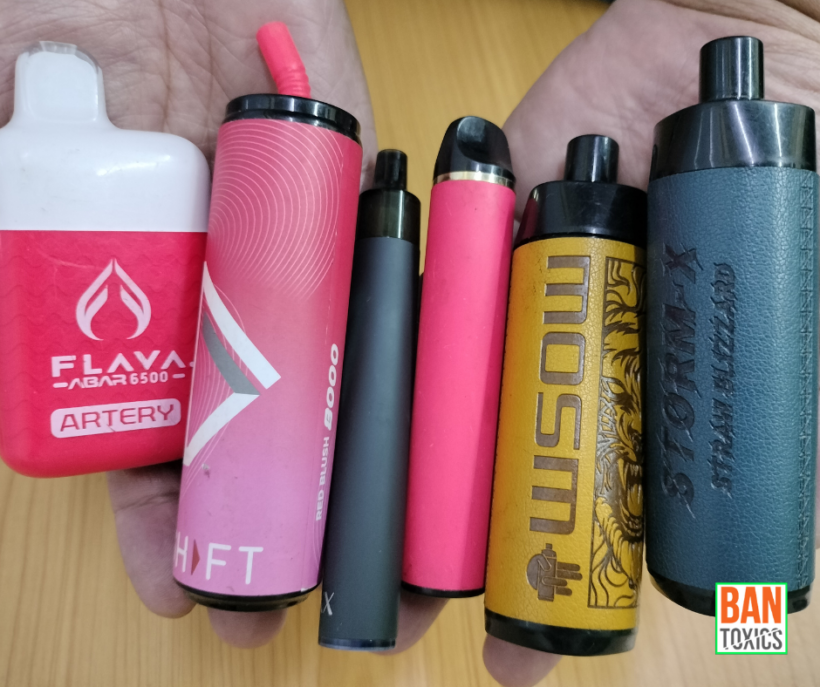Vaping use has been rising in the Philippines, particularly among teens. With the law allowing the use of vaporized nicotine and non-nicotine products for 18-year-olds and above, vapes, including disposable or single-use ones, have swamped the market. With the rising popularity comes an environmental concern over the disposal of vape waste.
Environmental Watchdog BAN Toxics conducted monitoring efforts with the assistance of some street sweepers and waste pickers in Metro Manila which aims to determine the improper disposal of discarded vapes. The group has collected some disposal vapes in waste bins, if not properly managed will end up in landfills, where similar e-wastes end up, dismembered to salvage parts, and discarded as ordinary waste.
The group also managed to monitor the availability of disposal vapes in online shopping sites, selling ranges from as low as P50 pesos to 299 pesos, with 800 to 8,000 puffs.
“E-cigarettes and vaping products are in a unique position – although many people believe that they are safer than traditional cigarettes, new research shows that they still impact human health in various ways. Additionally, the growing number of disposable e-cigarettes is alarming due to its contributions to our growing e-waste problems,” said Jam Lorenzo, Policy and Research Specialist of BAN Toxics.
While the world is beginning to understand the health and environmental impacts of e-cigarettes, disposal of vaping devices containing batteries represents yet another environmental concern. The World Health Organization last year warned against the additional harm to the environment by improper disposal of e-waste from electronic waste from the novel and emerging products, which generate toxic emissions and waste products.
“With vaping being a fairly new trend, there is a need for more research on its long-term impacts to human health, especially among the youth. Still, there is a wealth of information regarding its potential effects – e-cigarettes may contain volatile organic compounds and heavy metals such as nickel, tin, and lead. This can lead to increased risk of damage to the lungs and cardiovascular diseases, among others,” BAN Toxics added.
While the vaping law RA 11900 enacted in July 2022 is silent on product disposal and no other policy governing end-of-life disposal for vapes or e-cigarettes exists, the regulatory framework for the management of electronic waste or e-waste in the country has long been in place with RA 6969, or the Toxic Substances and Hazardous and Nuclear Waste Control Act. DENR Administrative Order 1992-29 released the implementing rules and regulations of RA 6969.
Based on these policy guidelines, an electronic product with a battery that has reached its end-of-life is considered e-waste. Vapes are classified as Waste Electrical and Electronic Equipment (WEEE) because of their electronic components. The majority of plastic liquid cartridges are also not reusable or recyclable. Without proper management, these products can be hazardous. Spent vapes produce new amounts of e-waste, creating a waste problem needing consumer guidance and proper waste management policies.
The environmental watchdog calls the attention of government officials to look into the sound management of vape waste this early in the game. The group further recommends launching a public awareness campaign on the health impacts and disposal problem of vaping devices.
BAN Toxics urges vaporized nicotine and non-nicotine manufacturers to implement extended producer responsibility (EPR) for the proper disposal of products, creating sustainable disposal channels, investing in schemes for recycling, and crafting sound policy regulations in place to prevent toxic pollution.
References:
https://legacy.senate.gov.ph/
https://emb.gov.ph/wp-content/
https://www.who.int/news/item/










